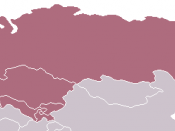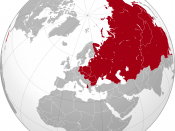Revolution was an important theme throughout the Cold War. Revolutions began, molded and then finally brought an end to the Cold War. In 1917, the Bolshevik Revolution forced Vladimir Lenin, the new communist leader, to withdraw from the World War I on the side of the Western Allies and to sign a separate peace agreement with Germany. The suspicions that this aroused among the Allies were the seeds of the Cold War. In 1949, the New Democratic Revolution of China ended the Kuomintang (KMT) rule and established a communist government, thus guaranteeing the existence of the Cold War. Throughout its existence, the Cold War appeared to be something that was constantly present and unchanging. However, revolutions in Europe and Asia after 1953 continued to shape the Cold War until revolution inevitably destroyed in 1989.
In 1954, after failing to contain communism in Korea, America involved itself in the Vietnam Conflict.
At this time, France had just lost control of its colonial holdings in Vietnam. After the French were defeated by a communist contingent lead by Vo Nguyen Giap at Dien Bien Phu, the French decided that they could no longer retain their Indochinese colonies. In the summer of 1954, France and Vietnam signed the Geneva Peace Accords. It was agreed that Vietnam would be temporarily divided along the 17th parallel such that the north would be communist and the south would not be. As a result of this, the United States decided to intervene in the South Vietnamese affairs in an attempt to contain communism as they had in Korea. It was at this time that the American National Security Council (NSC) published its 68th paper (NSC-68) in which they introduced the policy of rollback. NSC-68 guaranteed the liberation of nations under communist dictatorship for the purpose of gradually eliminating...


